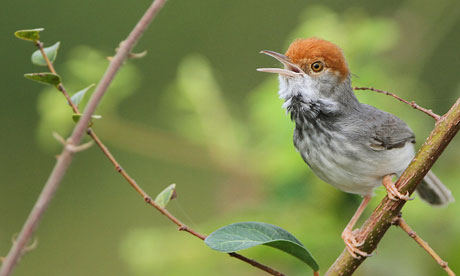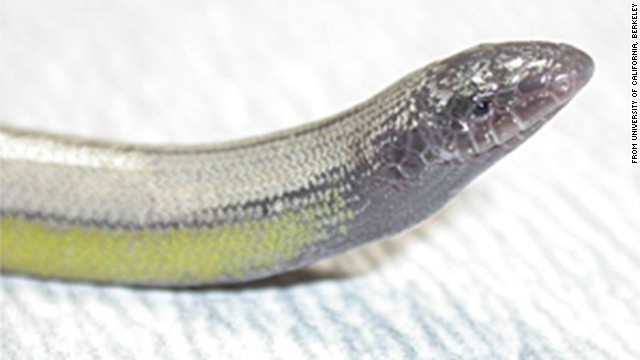The world is always happening. As we speak, unknown species may become extinct or discovered. Here is a list of recently discovered animals.
The olinguito (Bassaricyon neblina) is a species of carnivore discovered on 15th August,2013. It is the first carnivore in the western hemisphere to have been discovered in the last three decades. It was found in the mountane forests of the Andes of western Columbia and Ecuador. The olinguito was discovered Kristofer Helgen. The olinguito resembles a teddy bear. They weigh only about 0.5 to 1 kilograms, making them the smallest member of the raccoon family. Though they feed primarily on fruits and plants, they are part of the taxonomic order Carnivora. They are mainly nocturnal, making it difficult to spot and they have brown-orange fur.
The Boki Mekot rat (Halmaheramys bokimekot) is a species of rat that was discovered in the mountain forests of Halmahera, Indonesia. It is the newest member of the rodent family and was discovered by a group of researchers lead by Pierre-Henri Fabre. This rat has spiny brown fur and a stubby, white tipped tail. It was discovered in 2013 and also involved Kristofer Helgen, who had discovered the olinguito.
The Cambodian Tailor Bird
The Cambodian tailorbird (Orthotomus chaktomuk) is a species of bird first discovered in the busy city of Phnom Pehn, Cambodia. Despite living among the 1.5 million residents of this city, it was discovered only on 25th June, 2013. This bird has a black feathered throat and gray or olive colored wings. It has an unmistakable red or orange cap. It is found in the lowland scrubs of the city and is abundant in construction sites. It was not thought to be a new species until scientific analysis proved it to be distinct.
A.stebbinsi is a species of legless lizard that was discovered at the end of the airport runway of the Los Angeles International Airport. They were named after the famous herpetologist Robert C.Stebbins. They are yellow bellied legless lizards. They are found towards the west of the aiport. They were discovered in the year 2013.
Louisiana Pancake Batfish
The Louisiana Pancake batfish (Halieutichthys intermedius) is a species of fish discovered in the year 2010 under the Deepwater Horizon oil spillage in the Gulf of Mexico. This fish is disc shaped and has fin like structures which helps it 'walk' along the ocean floor. This 'walking' resembles the walk of a bat and hence is known as a batfish. The population of this fish is not known.
The goliath birdeater (Theraphosa blondi) is a species of tarantula discovered in 2006 in Guyana. It is the largest spider by mass and the second largest by leg span. They eat invertebrates and are also known to eat rodents, lizards and venomous snakes. A Victorian researcher has claimed to see this spider consuming a hummingbird. These spiders are harmless to human and their venom only causes mild swelling.
The Olinguito
The Yeti Crab
The yeti crab is placed under its own family known as Kiwa. There are two species that have been described: Kiwa Hirsuta and Kiwa Puravida. These species were discovered in 2005 and 2006 respectively. Kiwa Hirsuta was discovered along the Pacific-Antarctic Ridge about 1500 kilometers south of Easter Islands by a group set up by Robert Vrijenhoek. Kiwa Puravida was discovered in 2006 and described in 2011. It was found in a deep sea bottom off the coast of Costa Rica by Andrew Thurber, Kareen Schnabel and William J. Jones. For more details about this animal click here. This contains information about Kiwa Hirsuta.
The Boki Mekot Rat
 |
| An illustration of the new spiny rat species. Illustration courtesy Jon Fjeldsaa |
The Cambodian Tailor Bird
A. stebbinsi
Louisiana Pancake Batfish
The Louisiana Pancake batfish (Halieutichthys intermedius) is a species of fish discovered in the year 2010 under the Deepwater Horizon oil spillage in the Gulf of Mexico. This fish is disc shaped and has fin like structures which helps it 'walk' along the ocean floor. This 'walking' resembles the walk of a bat and hence is known as a batfish. The population of this fish is not known.
The Goliath Birdeater
The goliath birdeater (Theraphosa blondi) is a species of tarantula discovered in 2006 in Guyana. It is the largest spider by mass and the second largest by leg span. They eat invertebrates and are also known to eat rodents, lizards and venomous snakes. A Victorian researcher has claimed to see this spider consuming a hummingbird. These spiders are harmless to human and their venom only causes mild swelling.






